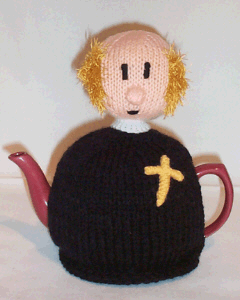Kids love Easter and decorating eggs but they also love to get in on the fun of making all the yummy treats. These kids Easter recipes are the perfect way to let them participate in the fun and make some delicious bunny bites and egg delights. The instructions for each of these are no-bake methods. You can bake your own items if you wish or just buy them store bought and then add the decorations to turn them into fun treats for this coming holiday.
Kids Easter Recipe #1
Easter Bonnet Cookies
 These bonnets are made for eating and not for wearing even though they look so pretty.
These bonnets are made for eating and not for wearing even though they look so pretty.Ingredients
Sugar Cookies
Vanilla Wafers
Frosting
Decorating Gel
Fruit Roll Ups
Directions
Take a vanilla wafer and spread frosting on the bottom of the wafer.
Place it in the center of a larger sugar cookie frosting side down.
Now frost the entire thing (both cookies).
Wrap some fruit roll-ups around the center (where the wafer is) and gently tie it into a bow.
Finish it off with some fun designs using the decorating gel.
If you want different colors for your bonnets simply add some food coloring to the frosting before you cover the cookies.
Kids Easter Recipes #2
Easter Egg Spinach Dip
This traditional bread and dip recipe is perfect for your party this coming holiday.
Ingredients
Large Oval Shaped Loaf of Bread (Rye or Pumpernickel)
Spinach Dip (store bought or make your own)
Yellow Food Coloring
Directions
Cut the loaf in half lengthwise.
Hollow out the middle of both halves.
Take half the spinach dip and place in a bowl.
Add yellow food coloring and blend in until you have the desired color.
Place the yellow colored spinach dip directly in the middle of the bread bowl.
Place the remaining spinach dip all around the center.
With the bread pieces taken from the middle, tear into small pieces and place all around the bread and serve.
Tip: Add some cheese amongst the bread by using a small scoop and block cheese. These will look like jelly beans placed in with the bread pieces. If you want you can decorate the outside of the bread (egg) using a spray cheese.
Kids Easter Recipe #3
Easter Bunny Cupcakes

These adorable bunnies won't last long once the kids see them. With their floppy ears and whisker noses, they look so cute and cuddly.
Ingredients
Cupcakes (store bought or make your own)
White Frosting
Black and Red Licorice strings
Nutter Butter Cookies
Brown and Red M & Ms
Directions
Frost the cupcakes (if not already bought that way) with white frosting.
Place 2 Nutter Butters on each side of the cupcake at the back (these are the ears). You can add some pink frosting to highlight the bunny ears.
Place 2 brown M & Ms in the cupcake for eyes and a red one for the nose.
Add some whiskers using the black licorice.
Finish this yummy bunny of with a smile using the red licorice.
Kids Easter Recipe # 4
Rice Krispie Easter Baskets
 Rice Krispie treats make the perfect ingredient for shaping into fun designs. These Easter baskets are so fun to make and decorate.
Rice Krispie treats make the perfect ingredient for shaping into fun designs. These Easter baskets are so fun to make and decorate.Ingredients
Rice Krispies
Marshmallows
White Frosting
Green Food Coloring
Jelly beans or Oval Shaped candies
Directions
Make the Rice Krispie treats as directed on the box.
Use a small bowl and place up side down.
Spray with cooking spray.
Press the Rice Krispies treat onto the bowl to shape it into a basket. Let it cool before removing.
On a sheet of waxed paper press some Rice Krispie treats into the shape of a handle. You may need to measure the bowl to make sure you make this long enough.
Turn it right side up and place on waxed paper.
In a mixing bowl combine the frosting and green food coloring.
Spread the frosting on the inside of the bowl to make it look like Easter grass. You can use other colours if you want.
Press the candies into the frosting to fill the basket with eggs.
Take your Rice Krispie handle and place frosting on both ends. Press on each side of the basket to hold in place.
To brighten up this kids Easter recipe you can use fruit roll-ups and wrap it around the handle for some added decorations.
Here are some fun and adorable kids Easter crafts for even more fun this holiday.
Julie Barros is the author and creator of Cool Kids Craft Ideas where you can find lots of kids crafts, coloring fun, games, activities and more.









